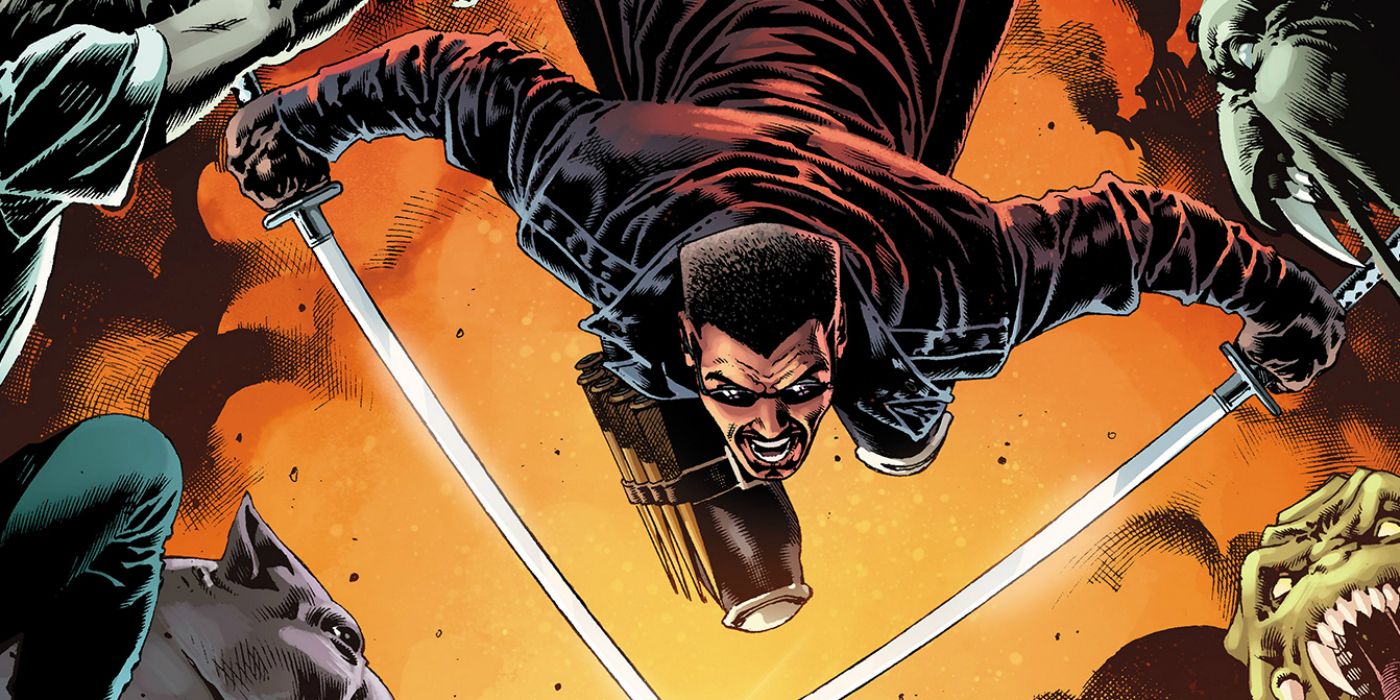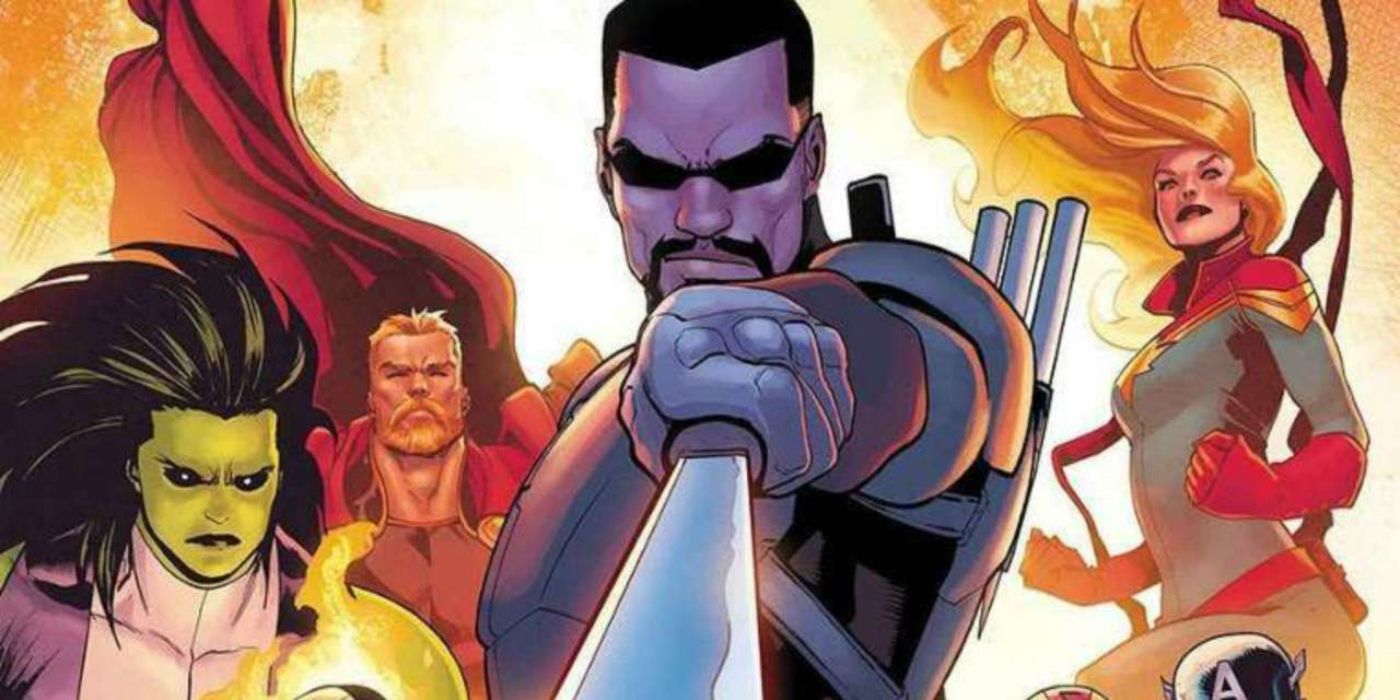The Blade movie radically transformed the comic book superhero - but will these changes last? Created by Marv Wolfman and Gene Colan back in 1973, Blade emerged at a time when horror comics were all the rage. But the original version would be unrecognizable to modern audiences - and not just because of his crazy fashion sense.
Blade has never really been at the forefront of Marvel's comics, and as such he's been subject to countless retcons. He was introduced as a human whose mother was killed by a vampire - at the very moment she was giving birth. Marvel could never quite make up their minds whether the vampire responsible was Deacon Frost, or Dracula himself, and as a result there have been conflicting accounts. Although this gave Blade a deep-rooted hatred of vampires, he didn't originally have any powers at all, and was simply known for his arsenal of vampire-specific weapons. Into the '80s, that began to change, with Marvel revealing Blade was immune to vampire-bites. But he was still a far cry from Wesley Snipes' iteration.
The '90s saw Marvel begin to pursue the idea of a Blade movie, and as a result they redesigned him in order to make him look a bit cooler. But the changes were all aesthetic - and they weren't enough to persuade New Line Cinema. According to scriptwriter David S. Goyer, one film exec actually suggested that Blade should be a white guy. But Goyer believed that Blade's race was integral to the character, and frankly he wanted to tell a story of vampire clans as an analogy for race in the first place. He instead envisioned Blade as a man with a foot in both worlds, a vampire who could live as a human being and walk in the sunlight, a sort of "half-breed." It proved to be the right call - and Marvel Comics was soon following Goyer's lead.
Blade was an unprecedented success, and it's impossible to overstate its importance to the superhero genre as a whole; it proved to the world that Marvel Comics characters could be hits as well. Naturally, Marvel wanted a piece of that action, but they were faced with a difficult problem; the comic book version of Blade would be entirely unrecognizable to anyone who'd just watched the film. Fortunately, Marvel editors noticed that one recent comic book story had seen Blade bitten by Morbius, the living vampire. Although Blade was immune to the bites of normal vampires, Morbius was the result of genetic experimentation, and Marvel figured that his bite could react with Blade's physiology in an unexpected way. And so the comic book character was transformed, literally overnight, into the same kind of being seen in the movies. Suddenly Blade was a supernatural powerhouse in his own right, a "Daywalker" who could walk in the sunlight, and who felt the urge to drink blood but resisted it and settled for artificial supplies instead.
All this raises an intriguing question; what approach will Marvel Studios take? It's worth remembering that Marvel Studios is always reluctant to repeat a story seen before on the big screen; as such, they could potentially choose to ditch all the Wesley Snipes/Daywalker trappings and revert back to the original comics with Blade. It will be fascinating to see how this plays out.


